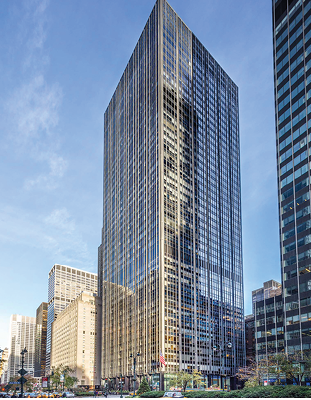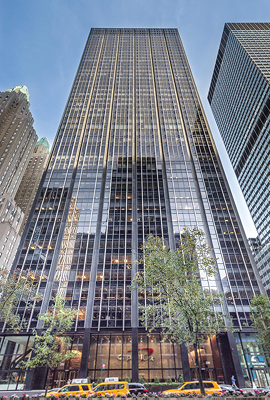- Home
- Media Kit
- Current Issue
- Past Issues
- Ad Specs-Submission
- Ad Print Settings
- Reprints (PDF)
- Photo Specifications (PDF)
- Contact Us


![]()
ONLINE

A Family Culture
Editors’ Note
Kenneth Fisher is responsible for managing, marketing, and leasing a portfolio of more than six million square feet of Fisher Brothers owned Class A real estate in Midtown Manhattan. He is co-Chairman of the Intrepid Museum Foundation and a member of the Real Estate Board of New York’s Board of Governors Executive Committee. Fisher also sits on the board of The Association for the Help of Retarded Children, The Jackie Robinson Foundation, and The General Command & Staff College at Ft. Leavenworth.
Company Brief
Fisher Brothers (fisherbrothers.com) was founded in 1915 by Martin Fisher, who was joined by brothers Larry and Zachary Fisher. Over the next several decades, Fisher Brothers built residential properties in Brooklyn, Queens, Long Island, Riverdale, Mount Vernon and later Manhattan. Fisher Brothers began putting up commercial buildings in the mid-’50s. It rewrote its business plan in the mid-’70s, adopting a new strategy that called for selling off its residential properties while continuing to develop and manage commercial real estate investments, and diversifying its investment portfolio into non-real estate sectors. With the decision to capitalize on the firm’s capabilities as a builder and manager, the partnership formed Plaza Construction in 1986 and Sandhurst Associates in 1992 to provide onsite management for other building owners.
Fisher Brothers has emerged as a highly diversified financial investment force. Assets currently under management exceed $6 billion, with a substantial portion strategically invested in a broad spectrum of financial markets and ventures, including opportunistic overnight investments in treasuries and repos, as well as building refinancing and construction loans.

Fisher Brothers’ property at 299 Park Avenue
Will you discuss Fisher Brothers’ investments in its New York City buildings in order to remain relevant and competitive with so much new product in the market?
It’s an interesting time in New York City real estate. There has been a lot of new product that has come online. This has forced the owners with buildings that are 55 years old or older, which is more than half the market, to go back and look at their assets and what is needed to compete with the new inventory.
In examining how best to update our buildings to compete, we began introducing technology into the overall designs, and we have been successful at it. Our upgrades to 605 3rd Avenue have been completed, 1345 Avenue of the Americas and 299 Park Avenue upgrades will be completed next year. It was important to make strategic changes both inside and out just to stay on tenant’s short list.
Is Midtown still as relevant as it once was and is it attracting the top tenants?
Yes. Midtown is still very relevant. When New York City introduced the Midtown East rezoning, it gave owners the option to demolish and rebuild existing buildings, or renovate and employ new technology. If owners can amass enough air rights, they can rebuild, but this can be too cost prohibitive, and is too lengthy a process. However, we are seeing older buildings with premier locations undergoing extensive renovations to better compete, giving tenants viable alternatives to moving West and Downtown. So Midtown is still relevant, and will be better than ever.

Fisher Brothers’ property at 299 Park Avenue
Where does the New York real estate market stand today and is it sustainable?
New York has always been the financial capital of the world. There are two different cycles now – the residential cycle and the commercial cycle. We used to feel that these were seven-year cycles, and they were 40 years ago; I can’t say it’s the same thing today.
Supply and absorption dictates where the markets stand. We have a lot of supply coming online – we have done very well with 111 Murray Street, and with House 30, which is our rental building. We have introduced fantastic amenities into both, as we are with our commercial buildings. We have designed these buildings not only to compete, but to be premiere in terms of what we’re offering in relation to the rest of the market.
The real estate markets can be challenged at times, but everything works around the cycles and how quickly things get absorbed, and price point will dictate how quickly that happens.
Whether it is sustainable or not, New York is never going anywhere – New York will always be vibrant and important and relevant. Meanwhile, the market tells us what we should and shouldn’t be doing in terms of timing.
For Fisher Brothers, is a key differentiator the family culture?
For tenants in our buildings, the ability to pick up the phone and call a Fisher family member directly is really significant. It’s important for the tenant to have that option and it’s important for us to maintain strong relationships with our tenants.
At Fisher Brothers, we all have our core strengths but, when we feel we’re lacking in a specific area, we’ll bring in the best people we can find to help complement us.
The family feel has always been a great marketing tool for our tenants.
Is the family’s commitment to philanthropy an extension of the real estate business or is it looked at separately?
There is no specific link between the business and what we do philanthropically and there has never been. We aren’t philanthropic in the hope of benefitting from it from a business perspective. It is completely separate and distinct.
We do what we do because it has been in our DNA throughout the generations and because we feel it is important to give back. While our charitable efforts are known for being military-centric, we also do a lot of other things with the police, firemen and all first responders.
What are the keys to effective philanthropy?
We can’t run a foundation without having some business sense. I don’t like to use the word “competitive” – we don’t really compete with other foundations. Our approach, whether it relates to the Intrepid, Fisher House, Fallen Heroes Fund or other causes we support, has always been to act as though it were a business.
The prospective donors have a much different mentality today. There are many more tools available to them so they can check on a specific foundation and how it’s being run, so it is important to be able to show results.![]()